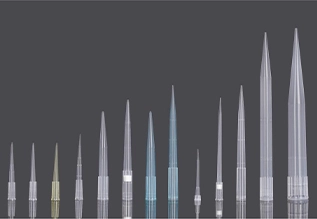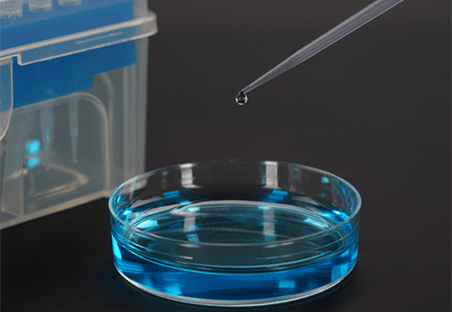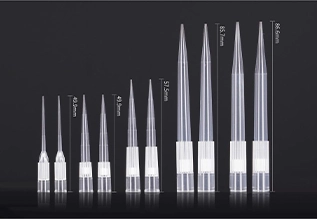Pipette tips, the seemingly simple plastic extensions of pipettes, play a crucial role in ensuring accurate and reliable liquid handling in countless scientific experiments. From delicate cell culture work to routine chemical analyses, the right pipette tip can make all the difference. However, with a variety of options available, choosing the most suitable tip can be a challenge. China pipette tips manufacturer Scopelab Knows what aspects people always want to know. We illustrate the essential aspects of pipette tip selection, proper storage practices, and important safety considerations to guide you in making informed decisions for your laboratory work.
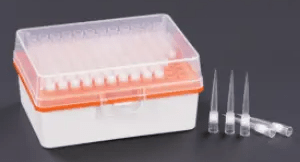
What Factors Should I Consider When Choosing Pipette Tips for My Experiment?
Scopelab has published an article named Choosing the Right Pipette Tip: A Guide to Universal, CLT, and Rainin Options. It includes differences among different pipette tips and gives some advice for opinion. There are just several simple factors that come into play to ensure optimal accuracy, precision, and safety. When choosing pipette tips for your experiment. Here’s a breakdown of key considerations:
Factor 1: Compatibility
Make sure the pipette tips are compatible with your specific pipette brand and model. Universal tips may work in some situations, but brand-specific tips typically provide a tighter fit and better performance. Choose tips with a volume range suitable for your experiment. Under-volume pipetting can result in inaccuracy, whereas over-volume tips may lack the precision required.
Factor 2: Material
The majority of pipette tips are made of polypropylene, but the specific blend can affect their properties. Choose virgin polypropylene for purity and low risk of sample contamination. Consider low retention tips for viscous liquids or samples where minimal loss is crucial. These tips are designed to reduce liquid adhesion to the inner surface.
Factor 3: Sterility
Determine whether sterile or non-sterile tips are appropriate. Sterile tips are essential for aseptic applications such as cell culture and PCR.
Factor 4: Features
Filter tips incorporate a small filter membrane at the tip end to prevent aerosols and contaminants from entering the pipette shaft. Use them when handling hazardous, volatile, or radioactive liquids. Some tips have etched graduations for approximate volume measurement during dispensing, particularly useful for repetitive tasks. Consider ergonomic features like beveled or gripped tips for improved comfort and reduced hand strain during prolonged pipetting.
Additional Considerations
Balance cost-effectiveness with the requirements of your experiment. Universal tips may be less expensive, but brand-specific tips can provide better performance for critical applications. If sustainability is a concern, consider biodegradable or recycled tip options, though these might not be suitable for all experiments.
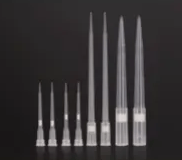
How Do I Properly Seal and Store Pipette Tips?
Pipette tips are critical components of laboratory work, ensuring accurate and contamination-free liquid handling. Proper sealing and storage are critical for preserving their integrity and avoiding contamination or damage. Here’s a comprehensive guide to properly sealing and storing pipette tips:
- Choose Appropriate Storage Containers
Choose appropriate storage containers designed specifically for pipette tips. The containers should be:
- Airtight: To prevent dust, moisture, or contaminants from entering.
- Durable: To withstand stacking, transport, and potential drops.
- Transparent: For easy identification of tip type and quantity.
- Segregate Tips by Type and Volume: Organize pipette tips by type (e.g., sterile, non-sterile, filtered, unfiltered) and volume (e.g., 10µL, 200µL, 1000µL) for easy selection and avoid mixing-ups.
- Seal Unused Tip Racks: Ensure that unused tip racks are properly sealed to maintain sterility and prevent contamination. Most tip racks include pre-attached lids or sealing mechanisms. If not, use parafilm or tape to make an airtight seal.
- Store Tips in a Cool, Dry Place: Keep pipette tips cool and dry, away from direct sunlight, heat sources, and extreme temperatures. Ideal storage temperatures range between 4°C and 25°C (39°F and 77°F), with relative humidity below 50%.
- Avoid Overcrowding: Do not overload tip racks or storage containers. Overcrowding can cause tips to become damaged or dislodged, raising the risk of contamination.
- Label Storage Containers: To ensure easy identification and proper stock management, label storage containers clearly with the tip type, volume, and date of purchase.
- Monitor Shelf Life: Be aware of the pipette tip’s shelf life, which is typically indicated on the packaging. To maintain quality and prevent contamination, discard expired tips.
- Practice Regular Inspection: Inspect stored pipette tips regularly for signs of damage, contamination, and moisture. Discard any damaged or compromised tips to avoid jeopardizing experiments or introducing contamination.
Following these guidelines will allow you to effectively seal and store pipette tips, preserving their integrity, preventing contamination, and extending their lifespan. Proper storage practices help to keep a clean and organized laboratory environment, reduce waste, and ensure accurate and reliable results.

Are There Any Safety Precautions I Need to Take When Using Pipette Tips?
Yes, there are some safety precautions you should take when using pipette tips to protect yourself and get accurate results.
- Never mouth pipetting: This is a large one! Avoid inserting the pipette tip into your mouth to aspirate liquid. Use a pipette or pump designed for this purpose.
- Work with hazardous materials safely: When working with infectious or toxic materials, wear appropriate personal protective equipment (PPE) such as gloves, safety glasses, and lab coat. Use cotton-plugged pipettes and properly dispose of them in sharps containers after each use.
- Prevent contamination: Avoid touching the tip with your fingers or allowing it to come into contact with any surfaces. This may cause contamination or errors in your measurements.
- Avoid excessive force: When using a pipette, avoid applying excessive pressure or force to the tip. This can damage either the tip or the pipette itself.
- Discard used tips properly: Do not reuse pipette tips. After each use, place them in a designated biohazard waste container (if applicable) or regular trash, depending on the material used.
- Maintain proper posture: Long-term pipette use can result in repetitive strain injuries. If you will be standing for an extended period, use ergonomic practices such as good posture, taking breaks, and using cushioned mats.
Following these safety precautions will reduce the risk of accidents, contamination, and injuries while working with pipette tips.
Conclusion
You can improve your laboratory practices by understanding the factors that influence pipette tip selection, implementing proper storage techniques, and following the safety precautions recommended by lab consumable supplier Scopelab. Selecting the appropriate pipette tip promotes accurate results, reduces contamination risks, and streamlines your workflow. A small investment in the right pipette tip can result in significant benefits to your research.
